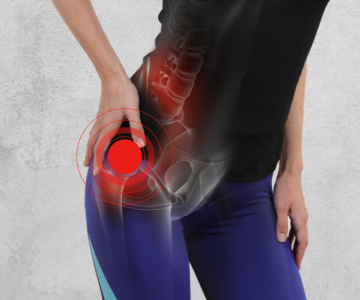Muscle cramps are a common and painful issue that can hinder your performance during workouts and races. Many endurance athletes, including marathon runners and triathletes, have experienced cramping during events, with studies showing that up to 67% of triathletes and 50% of marathon runners report cramps. While cramps can sometimes be attributed to underlying medical conditions or chronic diseases, the main causes of exercise-associated muscle cramps (EAMC) are muscle fatigue and changes in neuromuscular control.
Understanding why cramps occur and how to prevent them is key to maintaining optimal performance. By taking a proactive approach to managing fatigue and neuromuscular control, athletes can reduce their risk of cramping and improve their chances of success during an event.
The Science Behind Muscle Cramps
While hydration and electrolyte balance are often blamed for cramps, recent research suggests that they are not the primary causes. Instead, muscular fatigue and altered neuromuscular control are more significant factors. Muscle fibers contain receptors that monitor tension within the tissue, and when these receptors aren’t functioning properly, cramping can occur. Specifically, muscle spindles sense increased load and signal the nervous system to cause stronger contractions, while Golgi tendon organs (GTOs) work to inhibit contractions if the load is too high. When muscle fatigue sets in, muscle spindles become more active, while GTOs become less responsive, leading to spasms or cramps.
Factors That Increase Cramping Risk
Several factors can increase your likelihood of experiencing cramps. These include a history of previous cramps or injuries, poor pacing strategies, inadequate training for your event, poor posture, and tight muscles. By addressing these factors through proactive planning and targeted strategies, you can significantly reduce the risk of cramping.
Proactive Strategies to Prevent Muscle Cramps
- Monitor Your Pacing and Heart Rate
Test your heart rate, pace, and power ranges to determine the optimal levels for your performance. By training within these ranges, you can avoid early muscle fatigue that often leads to cramps. VO2 and threshold testing can help you identify your personal ranges, and monitoring for cardiac drift during longer events can help fine-tune your pacing and hydration strategy. - Establish a Solid Fueling Plan
While hydration alone may not directly cause cramps, insufficient fluid intake can lead to premature fatigue. Make sure your fueling strategy is aligned with your race requirements, as maintaining hydration is crucial for overall performance. - Optimize Movement and Load
Injuries can cause compensatory movement patterns, where certain muscle groups take on more work than others. This can lead to early fatigue in those muscles. To prevent this, incorporate motor control exercises to retrain your nervous system and use all the muscles necessary for movement. Additionally, resistance training can help strengthen muscles and improve the efficiency of your movement patterns under load.
Reactive Strategies for Cramping
Even with a proactive plan in place, cramps can still occur. If you find yourself dealing with muscle cramps during a race or workout, these strategies can help relieve the discomfort and get you back on track:
- Stretch the Affected Muscle
Gently stretch the cramped muscle to apply tension to the Golgi tendon organs, which can help relax the muscle. This active stretching technique can alleviate the spasm and provide relief. - Try Pickle Juice
Some studies suggest that small amounts of pickle juice can reduce the duration of an active cramp. This remedy may help alleviate cramps more quickly during events. - Slow Your Pace
If cramping occurs, slow down your pace by walking or soft pedaling for several minutes. Gradually ease back into your pace, avoiding any sudden accelerations that could strain the muscle fibers further.
Conclusion
Muscle cramps can be a frustrating challenge during exercise, but with the right strategies, they don’t have to derail your performance. By proactively managing factors like pacing, hydration, and movement patterns, and knowing how to respond if cramps occur, you can stay in control and keep moving toward your goals. Prevent cramps before they stop you in your next race, and make sure you’re prepared to handle them if they do strike.





